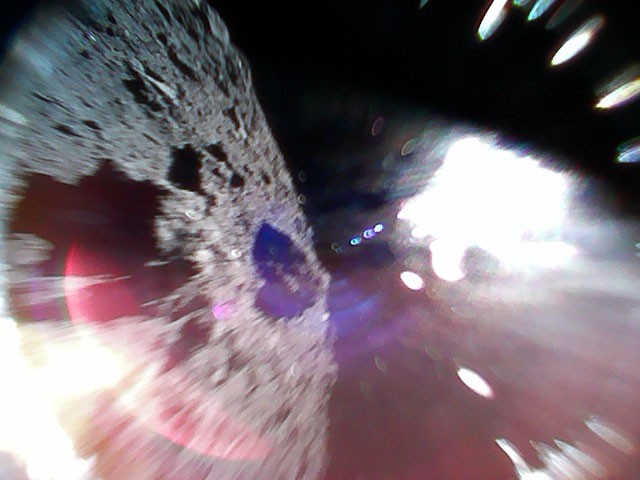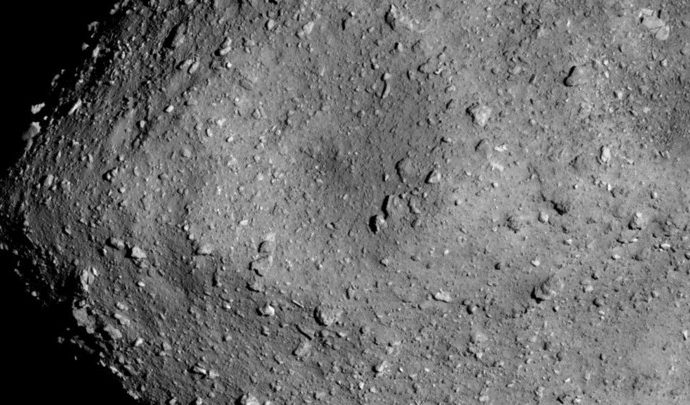A Japanese mission has captured mesmerizing views of a distant space rock.
Their successful deployment is a very impressive achievement. It’s not easy to land something on such a fast-moving, faraway object; a similar attempt on a comet in 2014 ended with a robot becoming permanently wedged in a dark crevice. But perhaps the most striking part of the maneuver is in the photographs of the landing.
The two Japanese robots have captured Ryugu in incredible detail. The images reveal a richly textured surface, with rocks of all sizes jutting out into the darkness of space:


From this vantage point, Ryugu doesn’t look like a hazy space rock floating hundreds of millions of miles away. It looks comfortingly familiar, like a rocky outcrop you might stumble across while hiking on Earth.
An interstellar tourist barrels through the solar system.
Telescope technology has vastly improved in the more than 200 years since asteroids were first discovered, but today, only the most powerful telescopes can resolve distinct features on the surface of the objects. The best way to photograph an asteroid is to visit, or at least fly past.
In 1991, the Galileo spacecraft buzzed past the asteroid Gaspra on its way to Jupiter. NASA engineers used data from the spacecraft to stitch together an image of the asteroid, which The New York Times described as “the first close-up photograph ever made of a rocky asteroid hurtling through the solar system.” This was the photo:

Galileo was about 10,000 miles from the asteroid when its camera pointed toward Gaspra. The Times referred to the composite photo as “a sharp portrait” of an asteroid, and, indeed, it was at the time.
The Hayabusa2 mission will produce many more close-up images in the coming weeks, thanks to the two robots. JAXA, the Japanese space agency, calls them rovers, but that’s a bit of a misnomer. The robots don’t have any wheels, which wouldn’t be efficient in Ryugu’s low-gravity environment. Instead, the bots are designed to push themselves around, and will quite literally bounce around the surface.
As the mission provides us with more close-up views of Ryugu, it will also deliver an unprecedented look at the solar system’s ancient past. Scientists believe that asteroids like Ryugu are remnants of the system’s creation about 4.5 billion years ago. The rocks have remained mostly unchanged since then, which means they still contain the materials—a mix of rock, minerals, and organic compounds—that coalesced to form the planets.
The Hayabusa2 spacecraft will soon attempt to excavate some of that history. The probe will fire a projectile at Ryugu to create a crater and expose long-buried material, and then dip its instruments inside to collect some samples before heading back to Earth. Like the two robots, Hayabusa2 has cameras on board. Our views of an asteroid are bound to become sharper still.
Source: The Atlantic

































Leave a Comment
You must be logged in to post a comment.